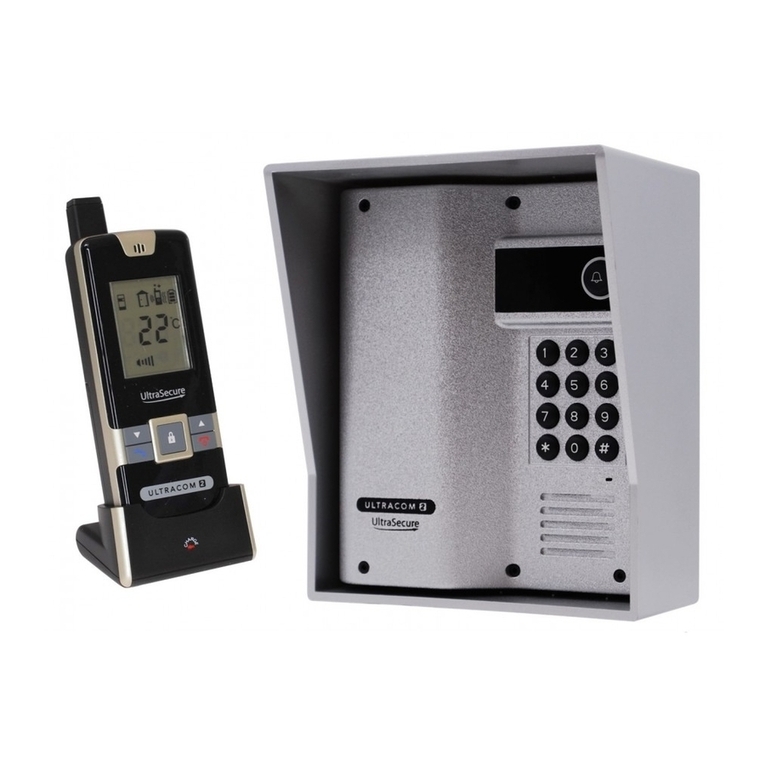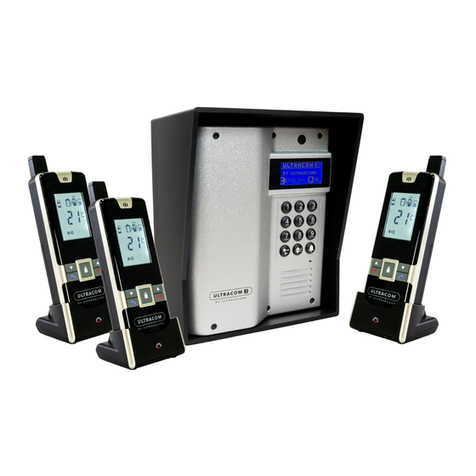
OPERATION
1. Switch on the handset by a long press (over 3 seconds) of the Power ON/OFF button 12 .
Press the same button again in case you want toswitch off the unit.
2. The LCD screen will show up. In case the self battery low icon O appears and an alarm heard,
the battery has run down and need to be recharged by placing the unit into the charger stand.
During charging, the segments inside the battery level icon P will flash in turn irrespective the
unit is switched on or off. To protect battery, if the unit is not being re-charged when the icon
O shown up, it will be switched off automatically after 10 minutes.
3. To select the different methods of incoming call alert, press and hold the Volume Up/Down
buttons 16 & 17 simultaneously for 2 sec to enter the selection mode. Use the Volume Up
16 or Down button 17 to choose one of the seven alert methods, shortly press the Hang
up button 12 toconfirm your selection and return to normal operation mode.
Depending on your selection, either one of the icons F to L will be shown on the screen. Note that
in case you select acombination with vibrating alert, the battery will run down more easily.
5. During conversation, the sound volume heard through the speaker 19 can also be adjusted
using buttons 16 &17 and the speaker volume icon Q will change correspondingly.
Please note the loudness of door chime is fixed and cannot be adjusted.
7. Make sure there is power supply to the caller unit (either by 12V DC or alkaline batteries). Now
press the Call button 1, a ding-dong tone will be heard and the Call indicator 4starts
flashing. Until a handset answers the call, the ding-dong tone will be heard periodically, remind-
ing the visitor to keep waiting. In case there is no answer after 20 seconds, the caller unit ends
the call by itself and the Call indicator 4goes off. Press the Call button 1to initiate the
call again.
N.B. In case there are two caller units (frontgate and backgate), only the unit whose call button
1 is first pressed will send out a call signal to handset, the remaining unit will keep in
standby mode until the conversation is over. If its call button 1is pressed during this
period, two “Be-Be” sound will be heard and the call indicator 4flashes for two times, indicat-
ing the unit is under standby mode.
8. Once the call is being answered, the Call indicator 4will light up steady and the ding-dong tone
stops ringing. Conversation can now be conducted.
9. Upon receiving a call, either icon A or icon B appears on the screen, depending the
call is from the front gate or back gate (in case you have purchased an optional caller unit for
back gate). The handset can answer the call by pressing the Answer button 11 and the
reception mode icon D will show up in LCD.
10






























